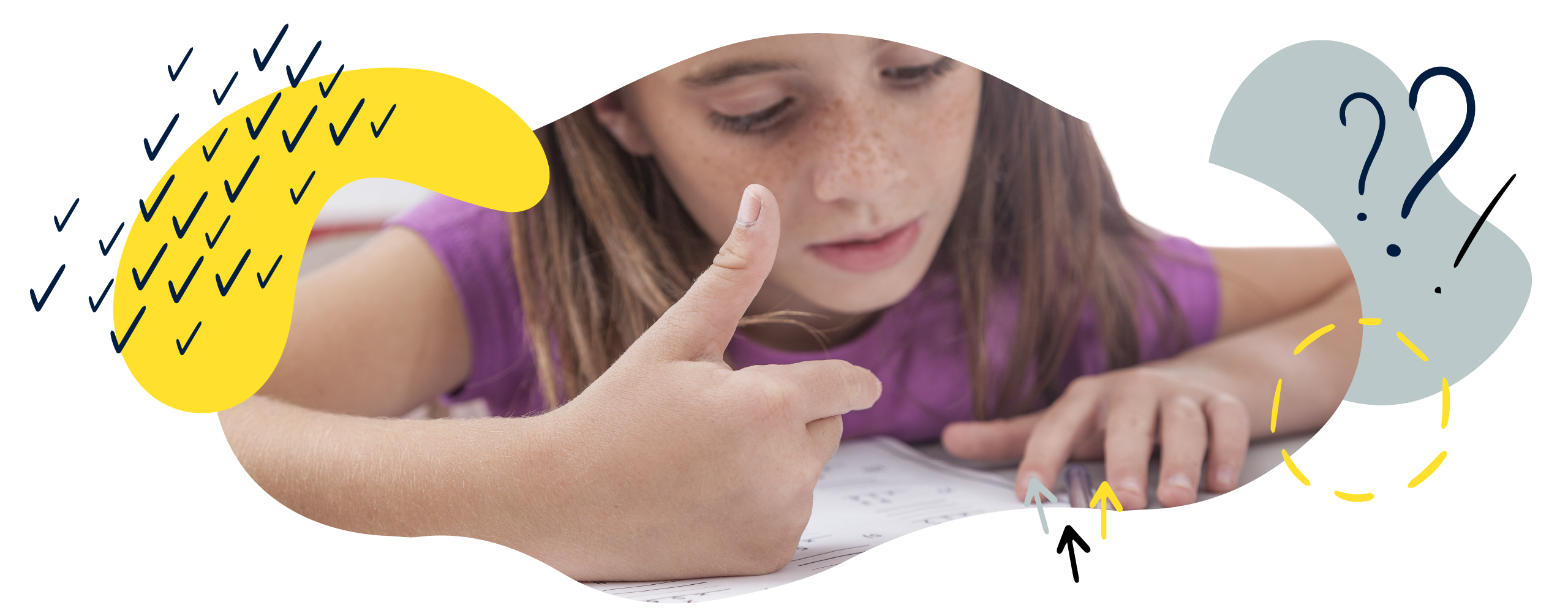Statistics
Data is everywhere, from football league positions, timetables, and weather charts to polls on social media. Statistics and data are essential for understanding the world.
Data handling is gathering, recording and presenting information in a useful way, from counting the amount of different coloured cars on a particular road to counting the number of birds in a garden over an afternoon. Learning these skills at Primary school will help your child understand numerical information throughout life.
Maths glossary
Use these quick links or explore our jargon buster for simple definitions and examples of mathematical terms.
- Bar charts are graphs that use bars to show information.
- Continuous data is data that can be measured at any point on a scale. It is often shown using a line graph.
- Discrete data is data that can be counted. It is shown in distinct, separated groups, such as in bar charts.
- Pictograms are pictures used to stand for quantities. They can also be called pictographs or picture graphs.
- Pie charts show information as a circle. The different-sized sectors or slices of the pie chart stand for the different quantities they represent.
- Tally charts show how often something happens. A frequency table is used to record this.
How to help your child at home
You don’t need to be an expert to support your child with maths! Here are four simple but effective ways you can help your child develop their understanding of statistics:
1. Discuss data
Look for real-life tables, charts, and graphs in newspaper articles or non-fiction books. Discuss what the data shows and ask your child about it. Why do they think the data has been presented in that way? Is it easy to understand? Could it be shown in a clearer way?
2. Conduct a survey
Help your child to survey friends or family about topics such as favourite films, foods, or sports.
How many people took part? What does the data show? How could it be presented? Encourage your child to analyse the data and ask questions about it.
3. Use timetables
Look at timetables together. For example, take a look at public transport, cinema showings, or holiday activity schedules. When is the next bus? How long will journeys take? When will films finish?
You could also encourage your child to make their own timetables for daily routines or excursions.
4. Get creative
We can present data in a variety of ways. Spend some time together making artistic and creative pictograms. Why not use dried pasta or tissue paper to create some imaginative graphs and charts?
Want more?
To help your child’s learning further, you may want to watch some of the videos included within our dedicated maths library. If you’re looking for more ideas to support learning at home, head over to our maths blog to explore articles full of top tips and fun activities.
What your child will learn at school
For more information about your child’s learning in a particular year group, use this handy drop down menu:
Statistics in Year 2 (Age 6–7)
In Year 2, children will begin to record, collate, organise, and compare information using simple ways to present data. This includes:
-
- interpreting and constructing simple pictograms, tally charts, block diagrams, and tables
- counting objects in categories to sort data
- asking and answering simple questions about data.
Statistics in Year 3 (Age 7–8)
In Year 3, children will interpret and present data in a range of ways. This includes:
-
- interpreting and making bar charts, pictograms, and tables
- understanding information presented using scales
- solving one-step and two-step problems using data.
Statistics in Year 4 (Age 8–9)
In Year 4, children will interpret and present data in bar charts, pictograms, tables, and other graphs. They will begin to understand how data can show changes over time. This includes:
-
- interpreting and presenting discrete and continuous data using graphs
- interpreting and making time graphs (a type of line graph)
- solving problems by comparing, adding, and subtracting data from tables, charts, and graphs.
Statistics in Year 5 (Age 9–10)
In Year 5, children will interpret and present data in a range of ways. This includes:
-
- solving problems by comparing, adding, and subtracting using data presented in line graphs
- representing data in time graphs by using the scales on the axes to plot points
- completing, reading, and interpreting information in tables, including timetables.
Statistics in Year 6 (Age 10–11)
In Year 6, children will interpret and present discrete and continuous data in a range of ways. This includes:
-
- connecting work on angles, circles, fractions, and percentages to make and interpret pie charts
- solving problems by interpreting and making line graphs
- calculating and interpreting mean averages.
